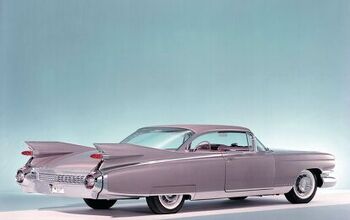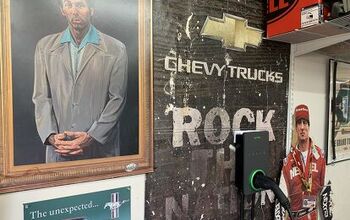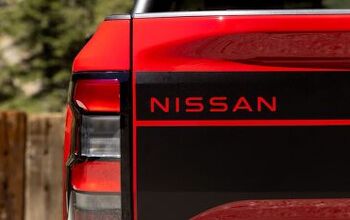Bark's Bites: Subprime Customers Don't Get To Negotiate

Dodge. Nissan. Kia. Mitsubishi. Ever wonder how any cars from these makes end up getting sold?
While there are certainly cars from these brands that attract the higher end of the automotive consumer marketplace (Hellcat, anyone?), the vast majority of the customers who end up in a car from one of these brands are in them for one reason, and one reason alone: they’ve got subprime credit. And they’re not alone.
In fact, over half of the American public now has subprime credit, and there’s no sign that it’s getting better any time soon. As a result, most customers are just walking into a dealership hoping to be approved for a loan. Instead of being in a position of power when it comes to negotiation, they’re in a position of weakness.
For dealers, this is great news. For consumers, it’s awful.
It’s why Nissan dealers are able to make significantly more money on both the front and back end of car deals than their counterparts at Honda and Toyota, and also how they’re able to compete on volume with cars that are — without a doubt — subpar in comparison to the competition. A Nissan Altima buyer is likely so happy that he has been approved to buy a brand-new car that he’s not focused on the overall purchase price at all. Instead, he’s focused on the payment. As long as the payment fits what the customer thinks he can afford, the dealer can make the purchase price whatever he wants.
Having a buyer who is focused on payments is the best possible scenario for a dealership. Payment terms keep getting longer and longer as captive finance arms are now willing to go up to 84 months on relatively inexpensive cars. The longer the term, the more money is being paid in interest, even if the interest rates are low. The magic number for most buyers when it comes to payments is $300. So, as prices on cars go up, loans are just being extended to get buyers underneath that mark. 84 months means that you can get a Focus ST(!!) for less than $300 a month, which explains all the FoSTs parked behind restaurants and tire shops.
Dealerships can then prey upon the fears of the customer with extended warranty and gap insurance costs. Most customers don’t think of how much money they need to save for a rainy day, should their cars break down after the warranty expires — they just look at their paychecks and figure out what the maximum amount of car they can afford is. Dealers know this, and they put laminated, massive repair bills in front of customers.
“Could you afford this if it happened to you?” they say, executing a beautiful piece of cognitive dissonance. Our cars are great — but they could also have a catastrophic engine failure at 60,001 miles. Hello, extended warranty!
And then comes the gap. For buyers with subprime credit, gap insurance is often a condition forced upon the buyer by the lender — or the dealer just lies and says that it is. Imagine the gap insurance costs on an 84-month loan at $15 a month — that’s $1,200 or more over the term of the loan! The dealer typically makes 40-50 percent profit on gap insurance, so that’s another $600 in the pocket of the F&I guy. And he knows that he’s got an uninformed, scared buyer across the desk from him that he can force into a product.
So perhaps you’re thinking that you have no sympathy for these people — that they should educate themselves and not fall victim to such tactics. If you’re thinking that, then you truly have no idea how subprime people live.
They can’t get bank accounts. They can’t get approved for a cell phone. They had to put down massive deposits for their apartments, their utility bills. Everywhere they go, they have to pay more money just to enjoy worse service than prime customers. Paying more money for a car loan just seems like a normal thing for them. It’s incredibly expensive to be poor in this country.
So what can a subprime customer do to avoid this trap? They can pre-arrange financing before they show up, likely with a credit union or their own bank (if they have one). They can exercise a little bit more caution and buy a car with a payment that’s about $100 a month less than they think they can afford. They can do whatever they can to improve their credit, including calling creditors and negotiating a payment to pay whatever they can actually afford, so that their credit doesn’t continue to get worse.
Most importantly, whatever you do — pay your current car note on time. Or, at least don’t go 30 days past due on it. If you’ve shown the ability to pay your car on time, regardless of what the rest of your credit looks like, you can get a car loan at prime or near prime rates. There is such a thing as an “auto-adjusted” FICO score. Car lenders look at that score to determine your rate, not your overall FICO. If you have to let a bill slide because of a crisis, don’t let it be your car loan. Make sure it gets paid by Day 29, and you’ll always have access to a loan for a car.
But remember, even if you’re subprime, there are more customers like you than customers with “gold balls” credit. Don’t feel ashamed. You still have the right to negotiate your purchase price. If the Nissan dealer won’t budge, the Dodge dealer might. Don’t swallow whatever price they give you. While you need to buy a car, they need to sell it to you even more.
[Image: Nissan]

More by Mark "Bark M." Baruth
Latest Car Reviews
Read moreLatest Product Reviews
Read moreRecent Comments
- Corey Lewis It's not competitive against others in the class, as my review discussed. https://www.thetruthaboutcars.com/cars/chevrolet/rental-review-the-2023-chevrolet-malibu-last-domestic-midsize-standing-44502760
- Turbo Is Black Magic My wife had one of these back in 06, did a ton of work to it… supercharger, full exhaust, full suspension.. it was a blast to drive even though it was still hilariously slow. Great for drive in nights, open the hatch fold the seats flat and just relax.Also this thing is a great example of how far we have come in crash safety even since just 2005… go look at these old crash tests now and I cringe at what a modern electric tank would do to this thing.
- MaintenanceCosts Whenever the topic of the xB comes up…Me: "The style is fun. The combination of the box shape and the aggressive detailing is very JDM."Wife: "Those are ghetto."Me: "They're smaller than a Corolla outside and have the space of a RAV4 inside."Wife: "Those are ghetto."Me: "They're kind of fun to drive with a stick."Wife: "Those are ghetto."It's one of a few cars (including its fellow box, the Ford Flex) on which we will just never see eye to eye.
- Oberkanone The alternative is a more expensive SUV. Yes, it will be missed.
- Ajla I did like this one.


































Comments
Join the conversation
As I get older I witness more and more of my friends and family committing financial suicide. I have a buddy who is a mechanic and just bought a loaded Toyota Tundra for a total price higher than his ANNUAL salary. He was complaining to me one night on the phone about his truck payments, gas and insurance and how it was killing him. I inquired what the problem is and I come to find out he put $5k down on the truck and therefore has an absurd monthly payment despite being spread out over 72 or 84 months - I forget which. He also told me the interest rate which I forget but it was close to 10%APR. He has a bad driving record so between payment, insurance and gas his vehicle is costing him around $1200 a month. $1200. This is just moronic. Every car he has had looks half destroyed after 2-3 years. His last care was so filthy and had so much junk inside it I thought he was living out of his car.
Another comment that will get lost in the vast wilderness of the internet, but BARK: "...which explains all the FoSTs parked behind restaurants and tire shops." and tire shops :) I loved it. :)